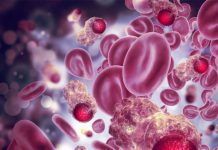Immunization protects our immune system against aggressive agents such as viruses and even certain cancer cells.
Emerging mRNA-based vaccine technology could train our bodies into generating antioxidant proteins that could boost our ability to protect our DNA from damage caused by sunlight.
A new study conducted on genetically altered mice has confirmed the role of an antioxidant enzyme in guarding against the chemical trauma caused by sun exposure, according to Science Alert.
The study conducted by researchers from the US and Japan was published in the Journal of Investigative Dermatology.
The concept, for now, is largely speculative and experts believe there could be plenty of obstacles.
Prof. Arun Indra of Oregon State University said mRNA vaccines could be an option to prevent skin cancer given their response to the ongoing pandemic.
He said, “For more than 40 years researchers have looked at dietary antioxidants as a possible source of inexpensive, low-risk agents for cancer prevention but they have not always performed well in clinical trials and in some cases have actually been harmful – hence the need to try to intervene with new chemoprevention agents such as an mRNA vaccine.”
Antioxidants interfere with oxidation, a process that results in the loss of a molecule’s electrons. And for delicate structures like DNA, oxidation could lead to chemical changes, which dramatically increase the risk of cancer or cancerous mutations.
Finding a way to overcome oxidative damage using some of the body’s own protective enzymes might cut that risk.
Thioredoxin reductase 1 (TR1), which is encoded by the TXNRD1 gene, is used by melanocytes (skin cells) to compensate for their release of reactive oxygen species. It activates another protein called thioredoxin, which binds reactive oxygen species before they can damage important structures.
TR1 has been observed at elevated levels in skin cells after UV exposure and in other tissues affected by various cancers, including melanoma.
Removing the TXNRD1 gene in mice helped the research team find a way to study the TR1’s role in pigmentation and the ability of skin cells to respond to oxidative stress.
The results suggested a clear potential in delivering TXNRD1 to skin cells to help promote melanin production and to limit the damage caused by sun exposure, per Science Alert.
Prof. Indra said, “People at increased risk of skin cancer, such as those who work outside in sunny climates, could ideally be vaccinated once a year.”
The idea of using mRNA-based vaccines to combat oxidative damage is something researchers have been taking seriously. “Clearly we’re at the tip of the iceberg but the possibilities are exciting for preventing different types of disease progression including cancer by modulating the bodies’ antioxidant system,” explained Prof. Indra.





















